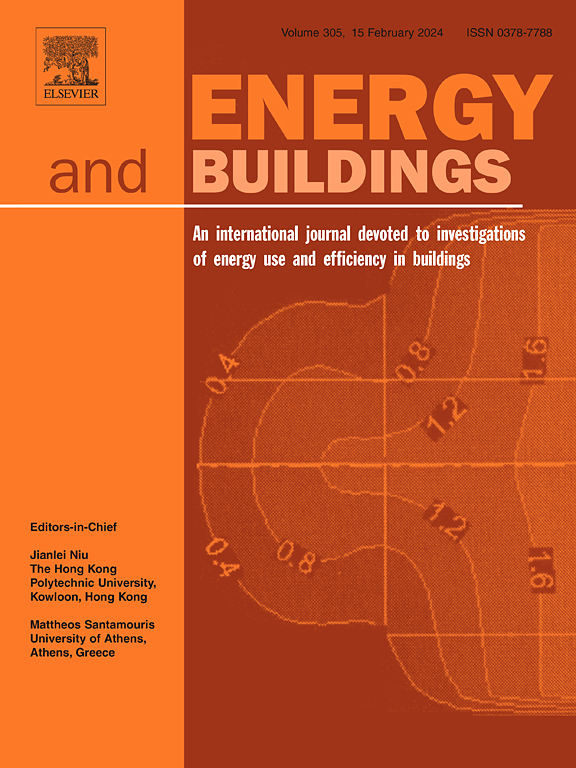Metadata schema for virtual building models in digital twins: VB schema implemented in GPT-based applications
IF 6.6
2区 工程技术
Q1 CONSTRUCTION & BUILDING TECHNOLOGY
引用次数: 0
Abstract
A virtual building model (VBM) is a virtual entity that represents the physical behavior of a target building mathematically within a digital twin environment. The creation and synchronization of a VBM are achieved by utilizing various interrelated virtual sub-models, including behavior, correction, and distance models. To achieve continuous digital twinning, it is essential to manage the VBM with virtual sub-models. However, existing metadata schemas have limitations in describing VBMs representing operational building behaviors within the concept of building digital twins (DTs). Therefore, this study proposes a novel metadata schema, termed the virtual building model metadata schema (VB schema), to represent and manage VBMs in DT-built environments. The VB schema is established according to the mathematical and semantic ontology of the in-situ modeling and calibration approach for constructing and correcting virtual models during building operations, and it is linked to physical entities, data, and applications within DTs. Specifically, it involves: (1) determining classes for operational data and virtual models; (2) establishing relationships for interactions between model and data entities, between model classes, between model and physical entities, and between model and applications; (3) defining properties for each class of models; and (4) extending into the exiting metadata schema of Brick. To demonstrate the proposed VB schema, a virtual model describing supply pressure behaviors in a central heating system was developed and represented using the VB schema for DT-enabled building operations. Additionally, the VB schema was utilized for implementing generative pre-trained transformer (GPT)-based DT applications, which highlights its benefits in enhancing ontology comprehension of DTs in the context of VBMs, improving autonomous problem-solving capabilities in real building systems, and providing better interpretation of application results compared to cases where only the Brick schema was used. The VB schema is expected to enable continuous and autonomous in-situ management of VBMs for intelligent building services within the DT.
数字孪生中虚拟建筑模型的元数据模式:在基于 GPT 的应用程序中实施 VB 模式
虚拟建筑模型(VBM)是一种虚拟实体,在数字孪生环境中以数学方式表示目标建筑的物理行为。虚拟建筑模型的创建和同步是通过利用各种相互关联的虚拟子模型(包括行为模型、校正模型和距离模型)来实现的。要实现连续的数字孪生,就必须用虚拟子模型来管理 VBM。然而,现有的元数据模式在描述数字孪生(DT)概念中代表建筑运行行为的 VBM 时存在局限性。因此,本研究提出了一种新颖的元数据模式,称为虚拟建筑模型元数据模式(VB 模式),用于表示和管理数字孪生建筑环境中的 VBM。VB 模式是根据原位建模和校准方法的数学和语义本体建立的,用于在建筑运行期间构建和校正虚拟模型,并与 DT 内的物理实体、数据和应用相连接。具体来说,它包括:(1) 确定运行数据和虚拟模型的类别;(2) 建立模型与数据实体之间、模型类别之间、模型与物理实体之间以及模型与应用之间的交互关系;(3) 为每类模型定义属性;以及 (4) 扩展到 Brick 的现有元数据模式。为了演示所提出的 VB 模式,我们开发了一个描述中央供暖系统中供暖压力行为的虚拟模型,并使用 VB 模式来表示支持 DT 的楼宇操作。此外,VB 模式还被用于实施基于生成式预训练变压器(GPT)的 DT 应用程序,与仅使用 Brick 模式的情况相比,VB 模式在增强 VBM 背景下 DT 的本体理解、提高实际楼宇系统中自主解决问题的能力以及提供更好的应用结果解释方面具有突出优势。VB 模式有望在 DT 内为智能楼宇服务对 VBM 进行持续和自主的现场管理。
本文章由计算机程序翻译,如有差异,请以英文原文为准。
求助全文
约1分钟内获得全文
求助全文
来源期刊

Energy and Buildings
工程技术-工程:土木
CiteScore
12.70
自引率
11.90%
发文量
863
审稿时长
38 days
期刊介绍:
An international journal devoted to investigations of energy use and efficiency in buildings
Energy and Buildings is an international journal publishing articles with explicit links to energy use in buildings. The aim is to present new research results, and new proven practice aimed at reducing the energy needs of a building and improving indoor environment quality.
 求助内容:
求助内容: 应助结果提醒方式:
应助结果提醒方式:


